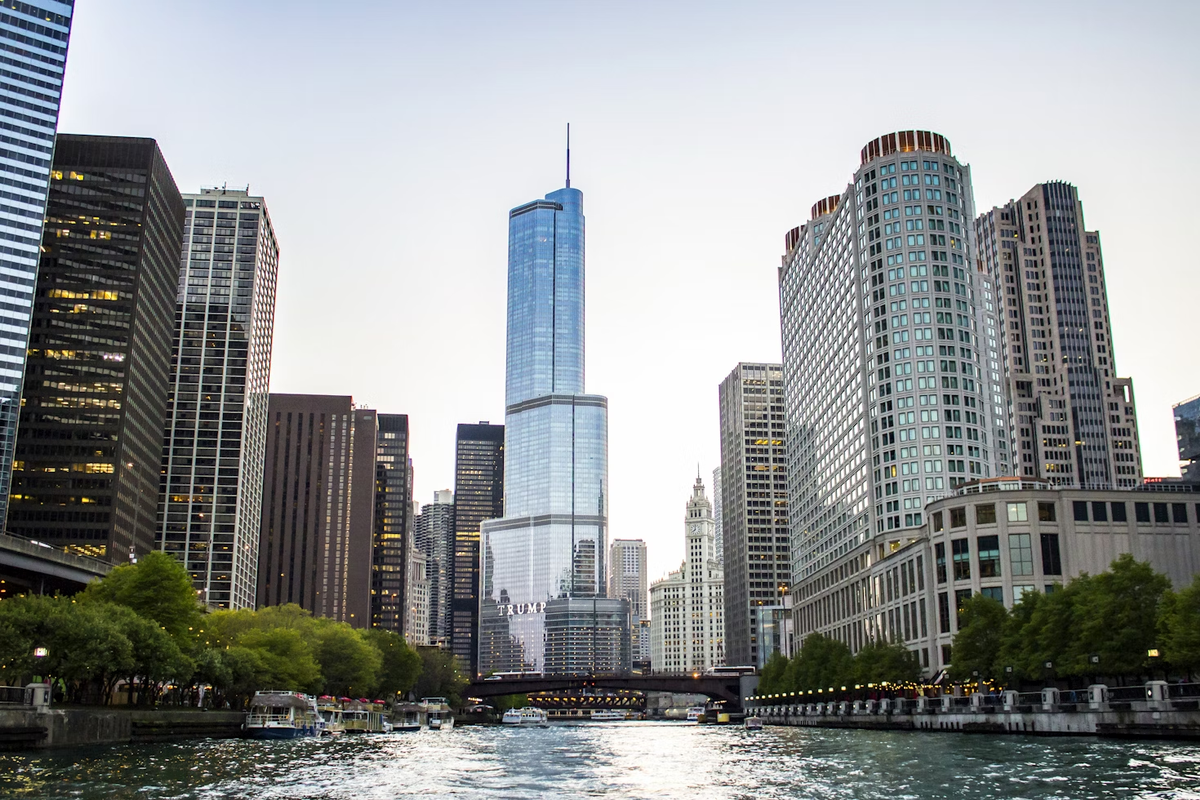The tightening of available space at the tippy top of Chicago’s office market is finally starting to send tenants down to the city’s next class of office properties.
More than 90% of active tenants in the market today are looking for what JLL classifies as Tier 2 space, said Edgar Leon, senior manager of Chicago research at JLL.

Tier 1 assets have about 9.5% vacancy as Q3 comes to a close, and availability is around 8%, according to JLL. As that continues to dwindle and little new construction is on the horizon, tenant demand is spilling into the city’s next rung of buildings, particularly in the West Loop, where much of that space is clustered.
There has been about 172K SF of positive direct absorption of Tier 2 space so far in the third quarter, as well as roughly 30K SF of sublease absorption.
JLL’s Tier 1 assets line up with traditional associations with modern, top-end Class-A: built in 2015 or later, featuring cutting-edge tech and in top locations. Tier 2 is closer to older Class-A or “A-minus,” defined as buildings built between 2000 and 2014 that are still competitive in the leasing market thanks to renovations, amenities and location.
Leon said Merchandise Mart is a good example of an attractive Tier 2 building. As tenants have downsized and left sublease space in the building up for grabs, that space has leased up quickly because it’s ready to use from the start.
Total lease volume in Tier 2 space has grown for four consecutive years and was up 16% in 2024 compared to 2023, according to JLL. In 2025, Chicago is sitting at roughly 2.4M SF of Tier 2 leases signed and is on pace to surpass 2024.
The acceleration could finally break loose a market that has been heavily dominated by leasing to trophy assets. Tier 1 properties have absorbed more than 6.3M SF since 2020, sharply outperforming the market, while Tier 2 has shed 1.3M SF and the broader central business district has lost nearly 10.9M SF.
Tier 2 vacancy is around 19%, with availability around 18%.
The number of tenants looking for high-quality Tier 2 space is higher than average because demand is coming from both ends of the spectrum — trophy tenants having to settle for less and Class-B tenants deciding they want more.
“Prepandemic, Class-B office tenants were generally satisfied with their space and often sought it out for cost-saving reasons,” Leon said. “Today, fewer Class-B tenants remain in Class-B offices, as firms increasingly recognize the benefits of upgrading their space.”
The brokerage expects the trend of tenants filling the next best space to continue.
Over the next five years, JLL projects Tier 1 vacancy to normalize, leading to significant spillover demand into Tier 2 buildings. In its “likely scenario” of minimal new office development, JLL sees Tier 1’s limited availability funneling tenants into older but renovated stock, while the best case sees accelerated Tier 2 leasing if no new construction emerges and Tier 1 tightens further.
And where tenants go, investors will follow.
“From an investment perspective, if you can find that building at the right discounted rate — because most of these buildings will require extensive renovations — if you can do that, I think that’s where you’re seeing the market go,” Leon said.
The West Loop, in particular, stands to benefit from tightening vacancy at the top of the market. The submarket features about 60% of the total Tier 1 and 2 space in the city, according to JLL. The area benefits from its proximity to the Metra and CTA and its available parking, Leon said.
Nearly 55% of tenants searching for space in Chicago’s CBD are targeting the West Loop, with 43% of them relocating from the Central Loop, according to JLL. New entrants to the market are focused on Tier 1 and 2 properties, and with a quarter of active tenants facing lease expirations between 2025 and 2027, JLL expects limited Tier 1 supply to send demand spilling over into Tier 2.
“The West Loop is the largest driver in office leasing,” Leon said.
A property’s proximity to the river also stands as a big boon to leasing.
River North could be a major beneficiary, with JLL projecting Tier 2 buildings in the submarket that are near the Chicago River will see a spike in tenant interest.
As a result of elevated construction pricing and uncertainty on project timelines, Leon said he is seeing rising demand for ready-to-use space. Spec suite programs are being added to new buildings to fill the need.
“When rolling out a newly renovated building, a lot of times it’s at the forefront,” Leon said.
